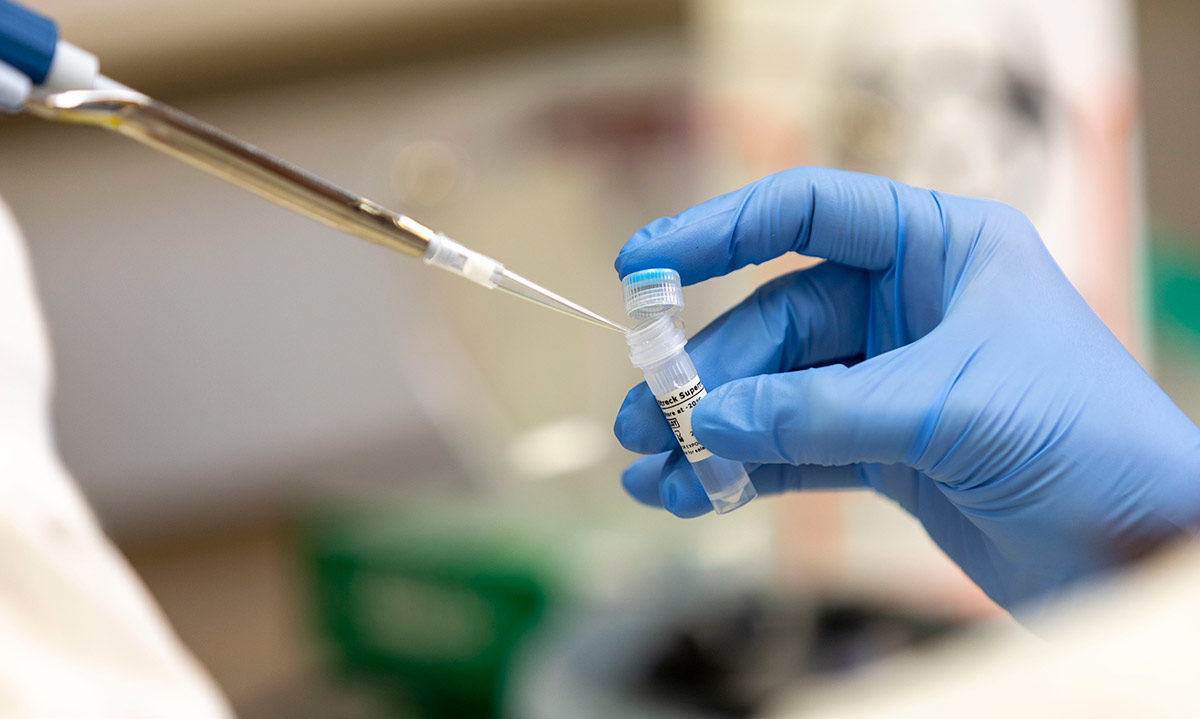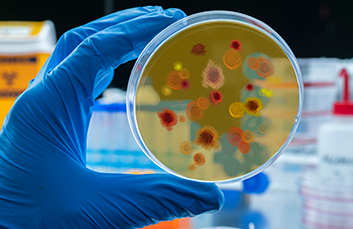AMR in the food chain
The food supply chain in the United States is among the safest in the world, but keeping it safe has become more challenging due to the rapidly evolving threat of antimicrobial resistance (AMR). Resistance to antimicrobial drugs (i.e., antibiotics) in food-producing animals can induce AMR in humans, because drug-resistant pathogens can be introduced at any point in food production and meal preparation. This has led to serious public health concerns and liability issues for companies in the food production and hospitality industries.
Overuse of antibiotics in intensive animal production has led to a rapidly mounting problem with antibiotic-resistant strains of bacteria that are infectious to humans. The problem is not limited to animal-based foods; fruits and vegetables may also carry these AMR pathogens through cross-contamination anywhere from farm to fork.
According to the Centers for Disease Control and Prevention’s 2019 AMR Threats Report, just two of the many AMR pathogens that are commonly transmitted through food – salmonella and campylobacter –cause an estimated 660,900 antibiotic-resistant potentially life-threatening infections in the United States each year. Because these and other AMR germs are resistant to antibiotics, they can cause outbreaks that are difficult to control. According to the World Health Organization, over 400,000 people die each year from food-borne illness, more than a third of whom are children under 5.
Over 400,000 people die each year from food-borne illness, more than a third of whom are children under 5.
Recognizing the growing national and global threat of AMR in the food chain, in 2014 the White House launched a national strategy for combatting this threat, led by the Food and Drug Administration, Department of Agriculture and CDC. A large part of this strategy is a monitoring program – the National Antimicrobial Resistance Monitoring System (NARMS) – to protect the food supply. However, waiting for government and public health inspectors to identify AMR pathogens within a company’s facilities can be perilous and costly; there may already be sickness in the community and the resulting production shutdowns, legal liabilities and negative press can be disastrous. Stakeholders in the food production and preparation industry are better positioned to identify and resolve such problems internally before they develop and government intervention is required. As always, prevention is the most cost-effective and safest approach.
The CDC has taken affirmative steps to combat the threat of AMR organisms in the food chain through its Antibiotic Resistance (AR) Solutions Initiative. This comprehensive plan is based on four principles:
- Detect: using comprehensive lab capacity and infrastructure for detecting AMR pathogens using cutting-edge technology, such as DNA-based diagnostics
- Prevent: using early detection to prevent disease outbreaks by early detection of AMR
- Innovate: staying ahead of bacterial developments by using cutting-edge diagnostics
- Respond: respond to AMR threats by identifying the source and preventing infection outbreaks.
Food industry stakeholders can apply these same four principles of AMR surveillance to their own internal food safety program. Streck offers cutting-edge AMR detection kits that allow stakeholders to perform internal surveillance using the innovative DNA technology advocated by the CDC and FDA. Biotechnology industry leaders including Streck are constantly engaged in research and development to stay ahead of the rapidly evolving AMR threat, making them the premier partner for rigorous internal surveillance.

Streck’s proprietary ARM-D® AMR surveillance kits provide your laboratory with the capacity for comprehensive surveillance of every step of your food-handling process to protect you and your customers. The Streck ARM-D kits are comprehensive, with the capability to identify over 1,000 antimicrobial resistance gene variants from 26 different gene target families. These versatile kits are compatible with your lab’s own 4-channel PCR system and are easily integrated into your existing procedures and protocols.
Streck ARM-D kits provide the anchor for integrating state-of-the-art vigilance for combatting the AMR threat in your food safety program. For more information about our comprehensive line of antibiotic resistance detection kits and to browse webinars, talks and posters related to ARM-D kits, visit our resource page.
Streck ARM-D Kits are for Research Use Only. Not for use in diagnostic procedures.


New antibiotic fights antimicrobial resistant bacteria

